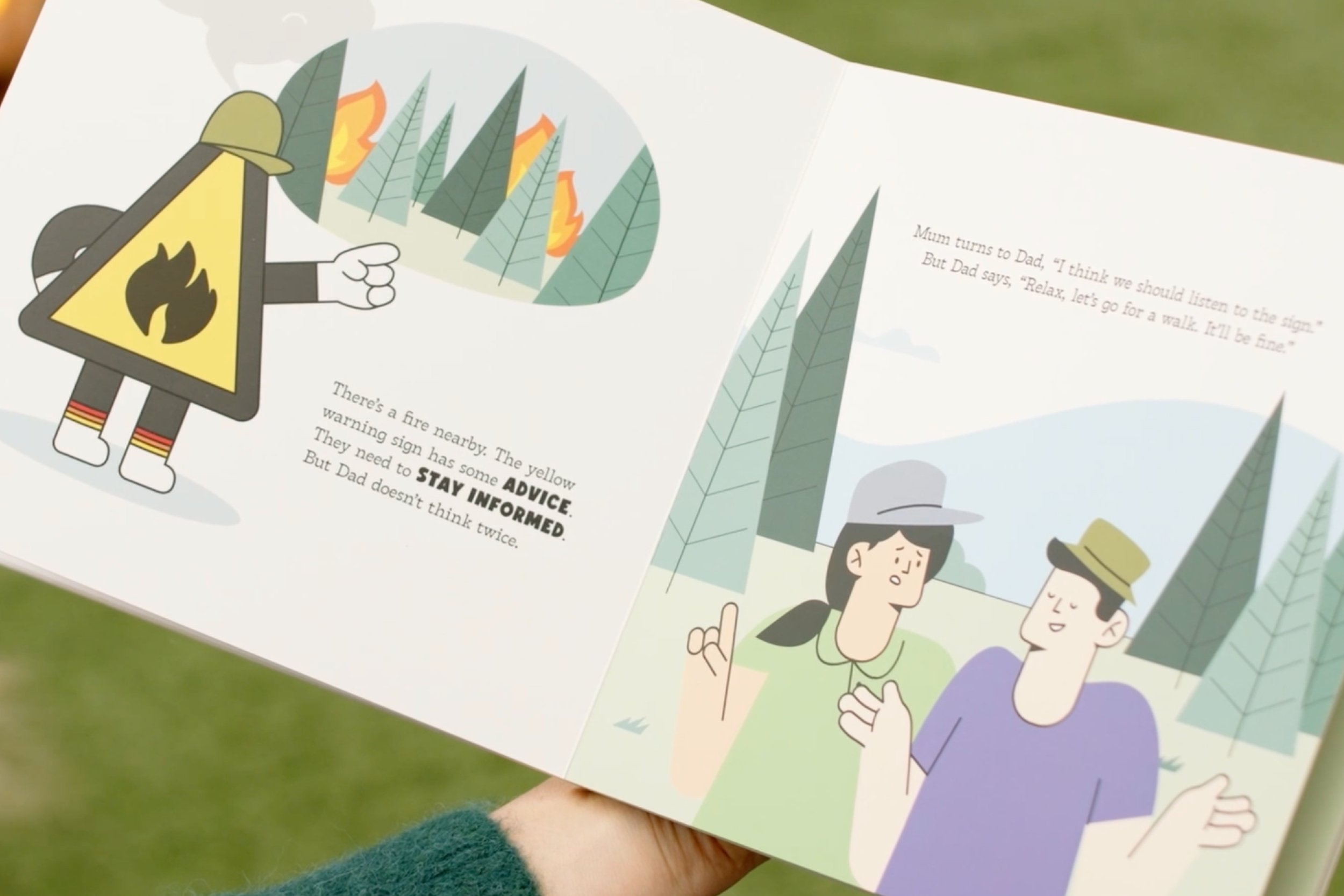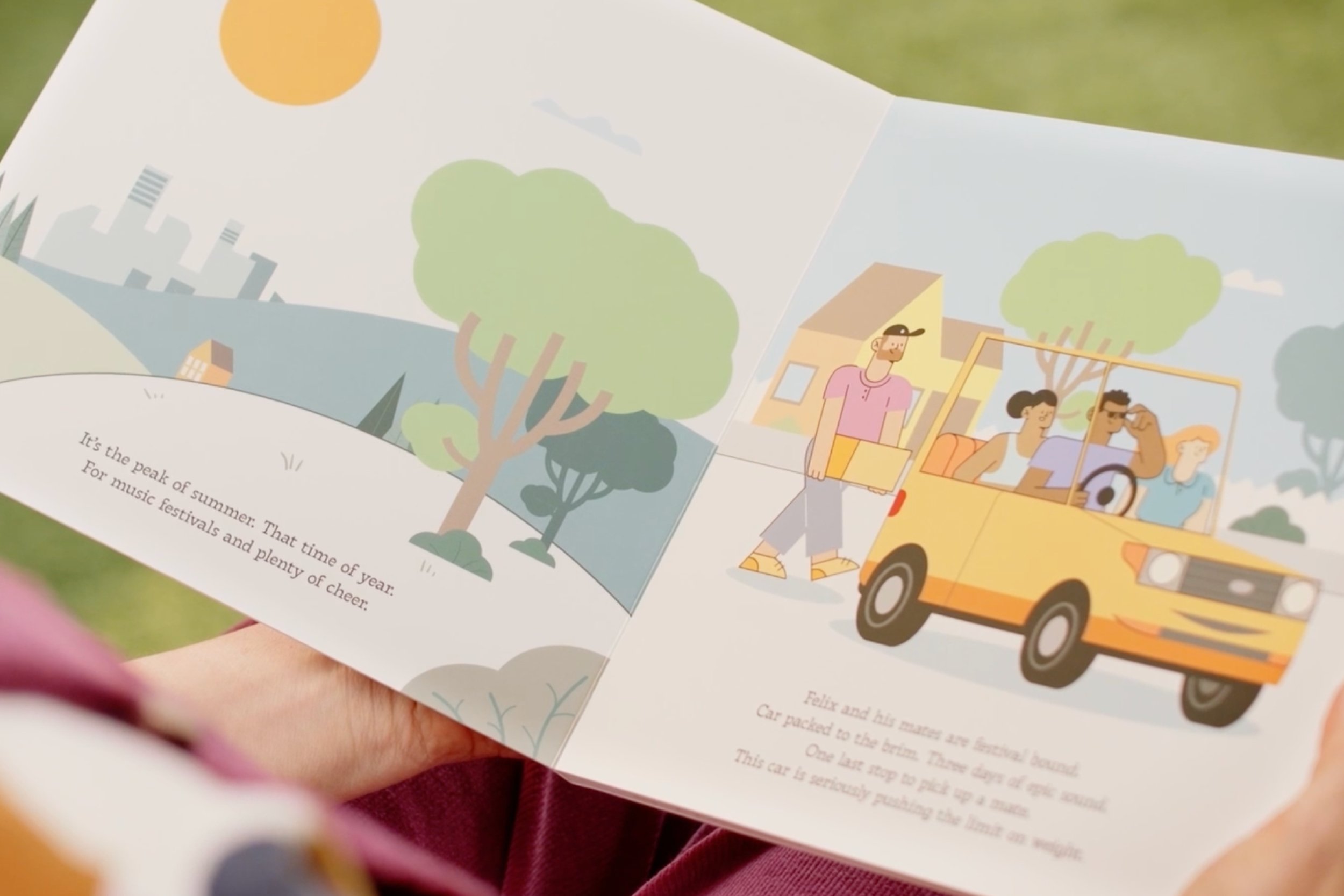
Get to know our warning signs.
Emergency Management Victoria
The Australian Warning System, designed to provide a uniform approach to various emergencies across the nation, presented the challenge of creating a community education initiative without relying on paid advertising. The task was to engage Victorian communities in understanding and utilising the system for emergencies like bushfires, floods, severe weather, extreme heat, and cyclones. The goal was to raise awareness about preparation, response, and recovery using the AWS. The strategy involved employing recognisable figures and captivating storytelling to convey the simplicity of the system.
The concept centred on translating the simplicity of the Australian Warning System into relatable narratives, taking inspiration from how one would explain it to children. This resulted in a series of picture books featuring endearing characters facing weather-related challenges during everyday scenarios like camping trips and music festivals. The focus was on making the warning signs themselves the stars of the campaign, introducing them to the community and integrating them into our hearts. Renowned storytellers, Justine Clarke and Melanie Zanetti, brought these characters to life in a way that resonated with the unique Australian narrative.
Collaborating with Emergency Management Victoria, State Emergency Services, and the Country Fire Authority, the execution involved crafting lighthearted yet informative stories that accurately conveyed the seriousness of hazardous weather events. Three bespoke stories were developed, and published as fully illustrated picture books, an engaging video series, and audio books with custom sound design. Attention to detail ensured accuracy in representing the AWS iconography, levels, and action statements across various media. The static warning signs were transformed into animated helpers with distinct personalities, featured across radio, audiobooks, social content, and posters. To reach a broader audience, the campaign content was localised in collaboration with translators and community leaders, translating posters into five languages.




